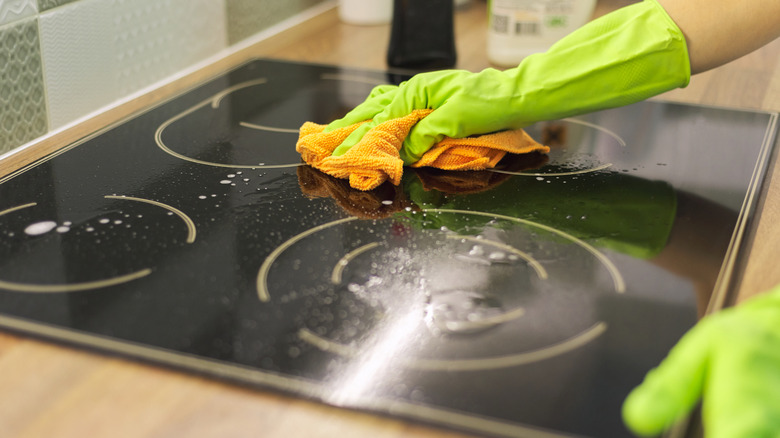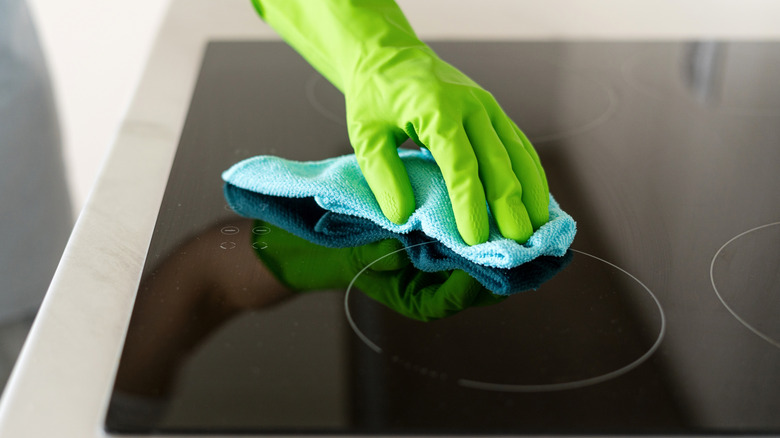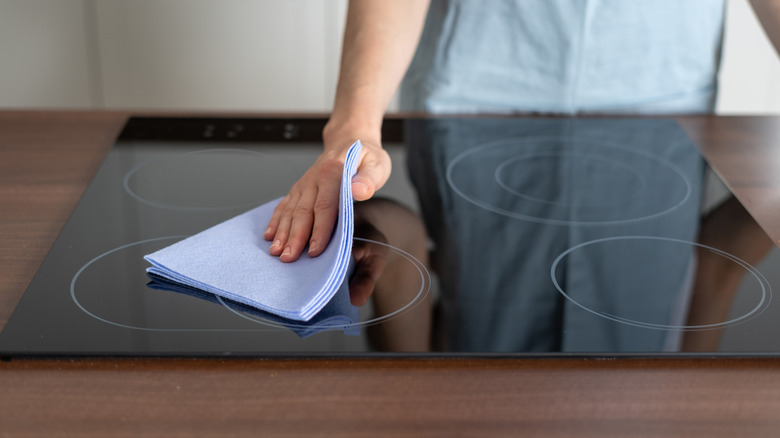Prevent Cleaning Scratches On Your Glass Stovetop With These Simple Solutions
We may receive a commission on purchases made from links.
Glass stovetops may be renowned for their modern and stylish appeal, but you can easily find yourself filled with sudden sorrow upon discovering that your stovetop is covered in random scuffs and swirl marks. You know deep inside that its brilliant glass surface deserves so much better than these unsightly scratches. But with a few smart cleaning practices, you can keep your stovetop spotless and scratch-free. This includes avoiding harsh cleaning materials, using only non-abrasive sponges, and taking precautions when maneuvering cookware on top of the stove.
Glass stovetops are made of tempered ceramic glass, and while prized for their clean appearance and convenience, one of their biggest downsides is their easy vulnerability to surface blemishes. Cleaning scratches can occur when you use materials that are too rough for their fine surface, such as steel wool scrubbing pads or hard-bristle brushes. These cleaning tools will always be a no-go when it comes to ceramic glass cleaning. Note that slamming cookware down on the stovetop too heavily can also lead to surface streaks and marks.
Products containing ingredients such as ammonia and chlorine bleach can leave your glass stovetop with streaks. Remember that the surface of tempered glass is very delicate, and even sliding heavy pots or pans from one burner to another eventually leads to micro-scratches in its surface that become visible over time. Some cleaners will work for various stove types. However, for glass stovetops, it's best to stick with cleaning products specifically designed for them. Or, at the very least, stick only to tried-and-true homemade cleaning solutions that have been co-signed by experts and swarms of homeowners alike.
Prevention tips for cleaning without scratching
So, what can you use to clean your glass stovetop without scratching it? Again, the first thing is to ensure that you're only using products that are recommended for use with the material. It's always helpful to take a look at your cleaning manual to determine what these may be. In most cases, you can simply clean it with a damp, soft cloth.
For instances when there is hard-to-remove grime or dried food, let the damp cloth sit on the surface for a few minutes to soften these stains instead of trying to remove this debris with scrub pads. Patience is key. You can also use baking soda and vinegar to clean your glass stovetop and knock those stubborn residue and grease spots out of the park. First, you'll need to sprinkle the stovetop with baking soda, enough to cover it lightly. Next, take a bottle of diluted vinegar and spray it over the stovetop, saturating where necessary.
Let the solution sit for a couple of minutes (around 15 minutes for heavy-duty cleaning). Then grab your damp cloth and wipe down the surface, going over stubborn stains multiple times if needed. Afterward, buff it dry with a clean microfiber cloth. This simple cleaning hack will return the dazzle to your glass stovetop without irritating its surface.
Additional ways to clean without scratching
Keeping your kitchen spotless can be challenging while you're in the process of making a meal. However, cleaning your glass stove top after each use is one of the best ways to keep it stain-free. And let's be honest, it's completely worth it. Always ensure that your stovetop surface is cool to the touch before cleaning it. Burning yourself is never any fun, and you also risk potentially releasing harmful fumes if cleaning products become hot enough.
In situations when you have burned food that has boiled over from your cookware or burned on top of its surface, turn off the oven, and treat the stain as soon as possible. You can use the baking soda and vinegar method in these situations, or try Weiman Ceramic and Glass Cooktop Cleaner, a commonly recommended ceramic glass cleaner. It's safe for the stove tops and can be applied using a damp cloth. Work the solution into the area and then wipe it off with a rinsed cloth. Note that it may need to sit for 10 to 15 minutes for tough spills.


